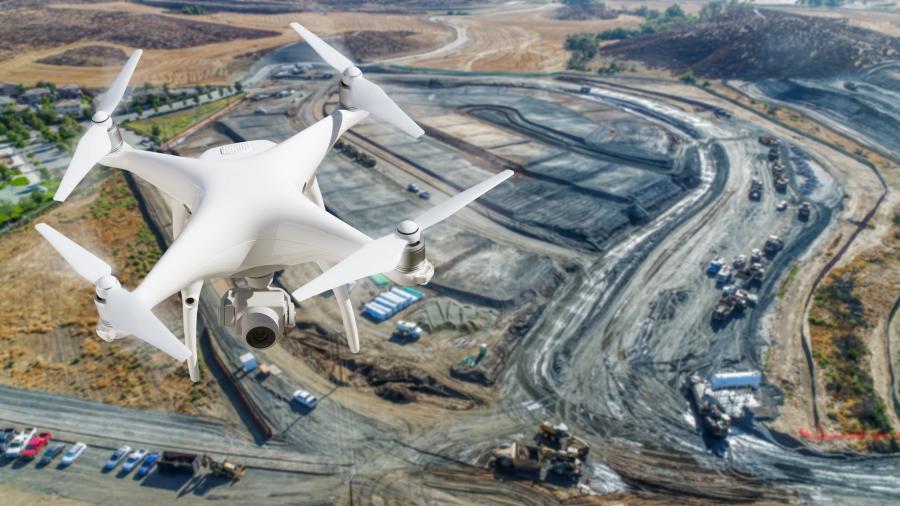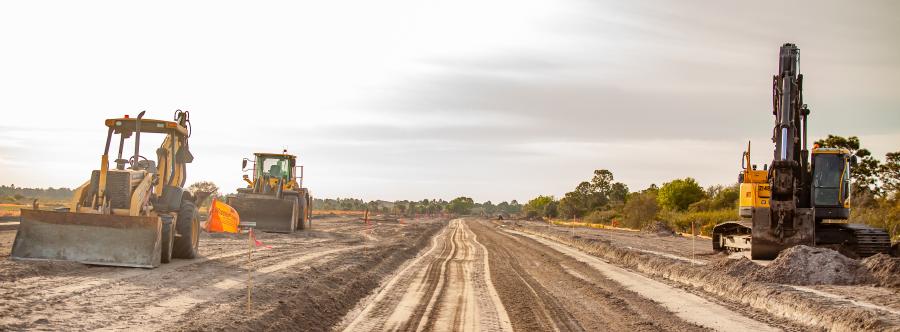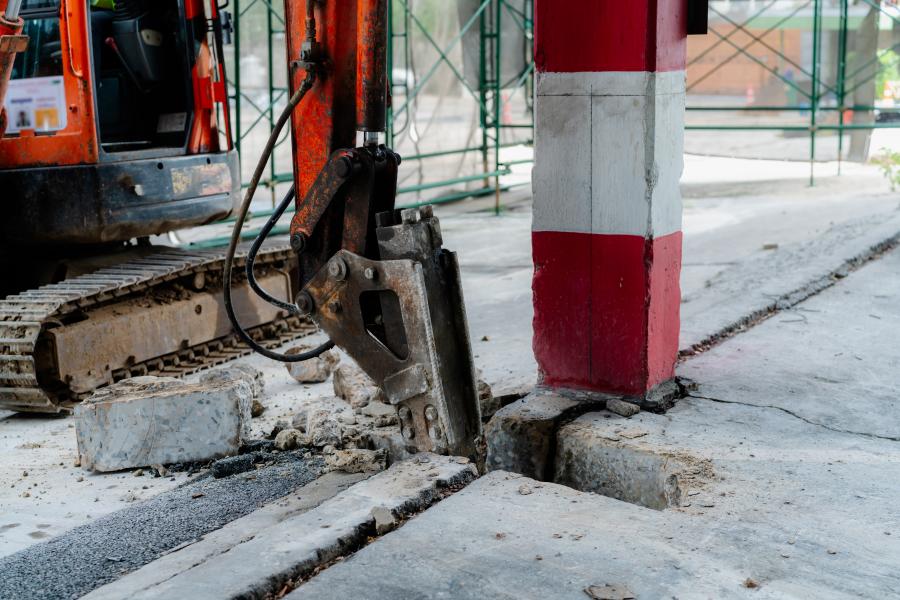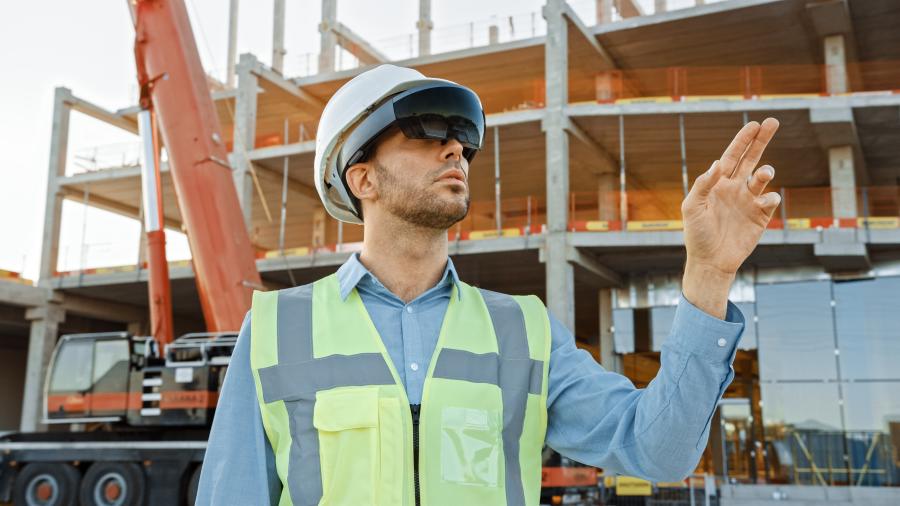Adobe Stock photo
Reality capture technologies, such as unmanned aerial vehicles or 3D scanners, are showing real promise for the construction industry.
The fragmented, specialized nature of construction will always require human involvement, but technology integration — specifically, robotics — is making construction sites even more productive. Though collaboration between tech developers and industry is critical to widespread adoption, safer job sites where workers are free to handle more challenging tasks is happening now.
"In an industry often averse to risk, construction professionals will want to see proof of success before widespread adoption of robotics in the field," wrote Andrew Roe, president of consulting firm AGR Associates.
As he sees it, robots are on construction sites everywhere, performing tasks humans would rather avoid.
"The robots are performing repetitive and sometimes dangerous work — often guided by CAD and BIM data," said Roe. "With the construction industry facing a labor shortage, the new tools are helping firms keep up with mounting workloads."
Surveying and data collection were automated years ago, but robotic equipment is transforming construction sites all across the United States.
Automated Pile-Driving
Automated technology is being adopted in the movement of construction materials from one location on a job site to another.
Construction companies partnering with manufacturers and integrating technology are crucial to the transformation becoming reality.
Mortenson Construction, partnering with Italian manufacturer Orteco, is using equipment that automatically distributes piles across solar farms. The GPS pile-distribution system was recently used on a large solar project in West Texas.
In the process, Mortenson was able to redirect crews to other more critical tasks and expedite completion of the project's initial phases.
Roe explained that the machine can free up to 80 percent of the craft workforce traditionally required to mark pile distribution points. The machine can then deliver piles to each location on the solar farm site, according to Mortenson. The pile-distribution system can precisely position piles awaiting the driving process.
"Our goal isn't to reduce labor," said Trent Mostaert, vice president of solar and emerging renewables for Mortenson. "The real goal is to accelerate how quickly we build solar projects. We want to get more out of the labor we have."
The automation continues to the actual pile-driving process, which features GPS-enabled machines from Vermeer. The GPS technology monitors pile installation with half the workforce used traditionally.
Mostaert said that in combination, the autonomous and semi-automated pile driving machines help reduce cost and risk of injuries.
"Smartly deploying our available workforce on the right aspects of a project and utilizing technology to improve in other areas makes this a reality."
For the pile delivery and driving phases, Mortenson imports location data to the equipment from topographic surveys and CAD files.
Robotic Trenching
Engineering, procurement and construction company Black & Veatch has helped develop an exosystem designed for trenching on solar facilities and other projects.
Roe said that the firm worked with Built Robotics on their Exosystem, considered a great fit for trenching because it happens away from critical work.
Tyler Parker, construction tools and technology manager for the firm, noted that the system has proven "to be a low risk, high reward in terms of a knowledge-building opportunity."
Partnering with Build Robotics, Black & Veatch introduced robotics beginning with 1,000-ft. trench lengths and progressing to 5,000-ft. trenches. The firm then successfully implemented the technology in full on a project last year.
"The robot did exactly what it was designed to do," said Parker. "It was very successful."
The Built Robotics system uses design data from CAD drawings or survey points, along with operator input. As trenching progresses, said Roe, the system also compiles real-time as-built data, such as trench length, width and location. Based on design data, the system establishes boundaries via Built Robotics' geofence feature.
To help improve safety on site, reduce production costs and increase productivity and efficiency, similar high-tech robotics systems are featured in other applications.
For example, the Ekso Evo Exoskeleton, a wearable device favored by engineering firm Burns & McDonnell, can reduce the impact of the weight of materials on the human body.
Repetitive Robots
Roe notes that robotics are visible in other construction applications including monitoring of field conditions in areas too dangerous for humans to navigate.
"Spot, a four-legged robot from Boston Dynamics has been used to gather site data and monitor field conditions," he said.
Construction Robotics offers Semi-Automated Mason (SAM) for bricklaying and Material Unit Lift Enhancer (MULE) to handle heavy material on construction sites.
Husqvarna and Waste Robotics, among other manufacturers, offer a variety of robotic demolition equipment, noted Roe.
ULC Technologies has developed RRES, a robotic roadworks and excavation system that automates inspection and repair of underground utility pipelines and facilities.
Black & Veatch also is partnering with Honda on equipment capable of performing multiple applications, including moving materials, water and supplies to pre-set destinations.
"The team tested the prototype Honda autonomous work vehicle [AWV] at a construction site in New Mexico," said Roe.
Technology to tackle construction tasks such as painting, drywall finishing and rebar-tying are in various stages of deployment, he said.
Challenges to Integration
The challenge to widespread integration of robotics in construction is that many of the firms potentially benefiting are smaller trade and specialty contractors.
"That's a big ask for a small firm when most of the machines are still relatively new and untried," said Rob Leicht, a Penn State University associate professor.
He qualified that comment, adding that robots could become more affordable as they become more common.
Leicht believes improvements in transmitting design information to construction also are necessary to move forward with adoption.
"We still work off a very paper-based orientation," he said. "It's getting better, but it's far from settled into a digital handoff."
Others believe the construction industry is inventive enough to adapt to emerging technologies.
Jim Swanski, director of construction digital transformation of engineering firm Burns & McDonnell, is in this camp.
The pandemic, marked by increased social distancing and reduced travel, blew up demand for the jobsite transformation. As a result, advanced technology involving processes like automation and artificial intelligence (AI) are taking longer to adopt, blogged Swanski.
"Technology can help make the workplace safer, improve productivity, enhance collaboration and make operations more efficient," he said. "So, to not fully embrace it where it makes sense seems foolhardy and can make companies less competitive."
He believes the adoption of Contech — construction technology used for work done in the construction industry — is one way to remain highly competitive.
"Our business is changing," said Scott Hendrickson, associate technology and innovation consultant of Burns & McDonnell. "We must do more with less. It's critical to move faster and simplify processes, allowing people in the field to work smarter and stay safe."
Technology gives skilled laborers working on sites new opportunities for engagement, he continued.
It "allows them to broaden and upgrade their skills, making them more valuable to employers, clients and the global economy."
Path to Automation
Contech is evolving along two paths: the digital experience for project management collaboration tools and the physical tools and equipment used on site.
The first path, project management collaboration, requires applications and software tools that offer value engineering, scheduling, cost-estimates and bid features.
But more frequently these days, are platforms that merge 3D models with schedule timelines for constructability, construction schedules, sequencing and logistics. All of this before a construction crew ever sets foot on the job site. And, as time goes on, these platforms are getting more sophisticated, said Swanski.
Where the jobsite tools and equipment are concerned, it's all about making tasks safer and more efficient. Technology along this path includes wearables, robotics, remote-controlled equipment and machines that use some form of AI.
Swanski believes that reality capture technologies, such as unmanned aerial vehicles or 3D scanners, are showing real promise. Equipment with the capability to capture and create digital representations of the physical assets of a construction site are currently booming.
"Firms are flying drones over project sites and creating point-cloud images or utilizing laser scanners to create digital twins of actual assets," said Swanski. "Technology also exists that enables drones to fly over a 5,000-acre site and in minutes create a progress report on how much work has been done and what's left to do."
Skid steers are being programmed to pick up and move materials automatically, and backhoes are being programmed to dig trenches and perform other tasks, he said.
A variety of field solutions are available that focus on safety and involve onsite monitoring.
Wearables technology can keep workers safe, check for site risks and monitor productivity while respecting worker privacy.
The technology uses integrated sensors and wireless network technology to provide an in-depth understanding of on-site activity, said Swanski.
Applications that monitor employee vital signs also are being utilized in the field to confirm they are not overexerting themselves to a dangerous level.
"There is a lot going on in terms of technology, and the truth is, all organizations struggle with how and when to adopt it," Hendrickson said. "Incorporating advanced tech into workflows takes careful planning and thoughtful consideration about where the greatest client benefits can be realized."
Swanski, who agrees, said, "While the investments in contech are exciting, we can't lose sight of the impacts to our customers and to our people."
He sees that "on the customer value side, organizations are increasingly adopting generative design to reduce the cost and weight of materials, while speeding up the design optimization process." CEG
Lucy Perry
Lucy Perry has 30 years of experience covering the U.S. construction industry. She has served as Editor of paving and lifting magazines, and has created content for many national and international construction trade publications. A native of Baton Rouge, Louisiana, she has a Journalism degree from Louisiana State University, and is an avid fan of all LSU sports. She resides in Kansas City, Missouri, with her husband, who has turned her into a major fan of the NFL Kansas City Chiefs. When she's not chasing after Lucy, their dachshund, Lucy likes to create mixed-media art.
Read more from Lucy Perry here.
Today's top stories


















